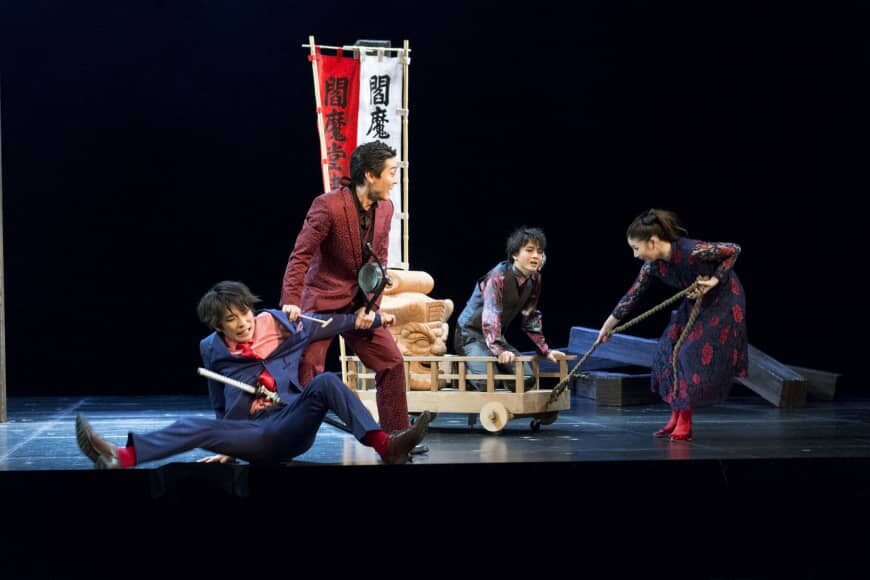The Theatre Times: For many people, the mention of kabuki brings to mind images of exaggerated makeup on actors’ white-painted faces, beautiful kimono costumes and colorful sets with dramatic backdrops.
Then there are the distinctive standardized movements; classic poses (mie) expressing certain emotions; the precisely choreographed fights and swordplay (tachimawari); and styles of acting (kata), which are passed down through the generations of each family of performers.

2 comments:
I think that this form of theatre is the future of theatrical work. The expansion of traditionalist methodology is going to be the way to expand perspective while also interesting the traditionalists and the new thinkers. Neo-Kabuki! What a cool concept. The founder of this contemporary Kabuki troupe sounds like an extremely intelligent human being. His ability to explain his role within the process of adapting these traditional performances for a more contemporary audience - and the fact that he is not the only creative voice in the room. This theatrical troupe is encouraging a collaborative and unique way for contemporary artists to understand a traditional and something intelligible artform. I loved one of the last quotes within this article about this troupe’s interpretation of certain Kabuki play’s being totally accurate. There should be hundreds of different ways of performing traditional texts in contemporary ways. This Neo-Kabuki troupe is just paving the way for people to feel comfortable with that possibility.
I am a huge fan a kabuki theatre and I love this idea of a modernized version of it that both respects the tradition and makes it into something modern and contemporary. I think this is an important thing to strive for especially when it concerns things like theatre have a historically prejudiced past. When it comes to doing “traditional” theatre it is not great to actually adhere to the customs and ways of doing it because it is generally not something that is up to date with modern day expectations. Like having men play female roles. In general, this would not really be accepted in today’s theatre, so it does not make sense to go by this “rule” anymore. Kabuki is a great artform that should never be forgotten, but modifying it to meet today’s expectations is a great way of honoring the past and making good theatre at the same time.
Post a Comment